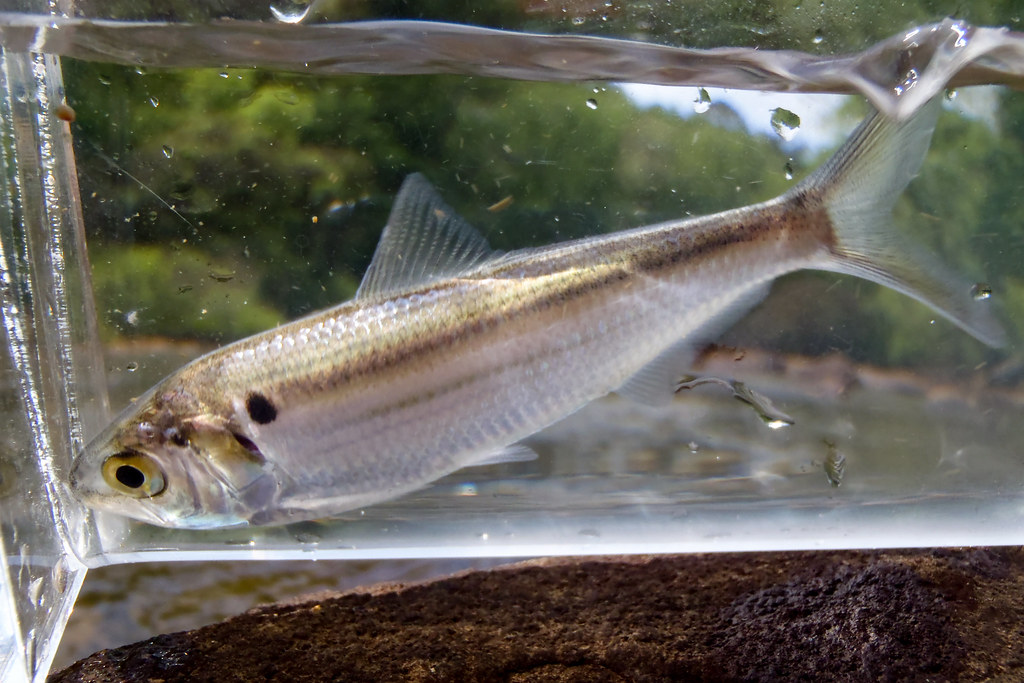Blueback Herring
Alosa aestivalis
The blueback herring is a small, silvery fish that migrate from the brackish waters of the Chesapeake Bay to the open ocean.
This section shows one large critter image at a time. Use the thumbnails that follow to select a specific image to display here.

This gallery contains a grid of small thumbnails. Selecting a thumbnail will change the main image in the preceding section.
Appearance
The blueback herring is a silvery fish with a blueish green back and dark spots on its shoulder. It also has spiny scales, called scutes, along its belly. Its fins are slightly yellow to green, with a branched pelvic fin and a short anal fin. The blueback herring can be difficult to distinguish from the alewife, but blueback herring have smaller eyes and are smaller overall, at 11-15 inches.
Feeding
River herring feed on plankton, shrimp, fish eggs and small crustaceans like copepods and amphipods.
Predators
Blueback herring are part of the forage base for large predators, such as striped bass and bluefish, but are also preyed upon by gulls, terns and other coastal birds. They are also threatened by habitat impediments like dams, habitat degradation and loss and commercial and recreational fishing. Dams block rivers that lead to spawning migrations and urban development produces pollution. These threats have restricted the habitat range of blueback herring.
Reproduction and life cycle
As anadromous fish, blueback herring migrate inshore and up rivers to spawn in fresh or slightly brackish water with an outlet to the sea in late spring. Males reach maturity earlier than females and are smaller. Female blueback herring reach maturity between ages three to five, and can lay 30,000 to 400,000 eggs each. The eggs are yellowish and semi-transparent.
Males and females release their sperm and eggs simultaneously into the water. After spawning, adults immediately migrate downstream. Once hatched, juvenile blueback herring remain in freshwater nursery areas in spring and summer, feeding mainly on zooplankton until the water temperatures fall. As it gets colder, the juveniles move downstream to saltier waters and eventually out to sea.
Did you know?
- Blueback herring are an anadromous species, which means they can live in both fresh and saltwater and they migrate up rivers from the sea to spawn
- Blueback herring have spawning marks on their scales recording the number of times each individual fish has spawned in its lifetime.
- Blueback herring come to the surface when the sun is shining, and go deeper into the water on darker days.
- Adult blueback herring migrate coastward in response to changes in water temperature and light intensity.
Sources and additional information
- Blueback herring, Alosa aestivalis (Mitchill, 1814) — U.S. Fish and Wildlife Service
- River Herring — NOAA Fisheries
- Maryland Fish Facts: Alewife and Blueback Herring — Maryland Department of Natural Resources
- Blueback Herring — Virginia Institute of Marine Science
- River Herring — The Uncommon Guide to Common Life on Narragansett Bay
- Blueback Herring — Atlantic States Marine Fisheries Commission
